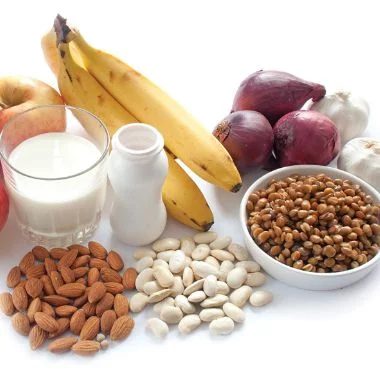Learn the difference between prebiotics and probiotics, see the benefits of fermented food and try out a recipe for sauerkraut. Digestion has never been better.
Did you know?
Our bacterial cells outnumber our human cells by 10 to 1. According to Martin Hum, PhD, DHD ‘ over 400 types of micro-organisms co-exist in a complex ecosystem within our gut. We have literally trillions of bacteria living in our bodies. Where traditionally we’ve thought of bacteria in a very negative sense, we’re now lauding the benefits of these microbes and are seeing them as key to a host of health issues.
More than 2000 years ago, Hippocrates said ‘all disease begins in the gut.’ Two key components of good gut health are digestive enzymes (what’s the use of eating good food when your digestive system isn’t working optimally) and pre and probiotics. Prebiotics can be thought of as fertilizer for good bacteria. They encourage the growth of good bacteria in the gut. Plant fibre from fruits and vegetables contain the components required for this, which are known as oligosaccharides. They are found in foods like onion, garlic, bananas, asparagus, leeks and Jerusalem artichokes.
Probiotics are live micro-organisms that remain intact throughout the digestive process and deliver healthy bacteria directly to the large intestine. They’re also available from foods and in supplement form. The most well-known probiotics in supplements are Lactobacillus acidophilus, Bifidobacterium longum and Bifidobacterium bifidum. These beneficial bacteria or ‘friendly micro-organisms’ in the digestive tract affect the health of our entire system.
A good balance of healthy bacteria will:
- Boost the immune system.
- Lower cholesterol.
- Reduce allergic reactions to food and the environment.
- Help prevent constipation.
- Reduce intestinal inflammation.
- Suppress the growth of harmful micro-organisms.
- Help manufacture Vitamin K, B-group vitamins, digestive enzymes and essential fatty acids.
- Help prevent lactose intolerance by supporting lactose digestion.
Our systems are often depleted of digestive enzymes because of the way we prepare, grow and process our food. Antibiotics, overconsumption of alcohol and chlorinated water, are some of the factors responsible for emptying our healthy internal microbe stores. Steroids, non-steroid anti-inflammatory drugs, oral contraceptives, HRT and chemotherapy also disrupt the micro-organism habitat.
Recent studies show the connection between leaky gut, celiac disease and IBS with a lack of digestive enzyme and pro-biotics. Many ‘anti-bacterial’ products are advertised as great home cleaning agents but evidence shows the use of antibacterial and antimicrobial cleaning products, particularly in combination with the over-prescription of antibiotics, may produce strains of multi-resistant organisms.
New varieties of cleaning products without anti-bacterial agents are becoming more popular and are said to be the cleaning agents of the future. There is evidence that children with prolonged exposure to anti-bacterial agents have a higher chance of developing allergies and scientists believe this could be because of reduced exposure to bacteria.
Besides the gut, probiotics are also being used in beauty products for the skin. Think of the homemade beauty mask with yoghurt. Beauty brands are catching onto the fact that probiotics might just be the next big advance in skincare, and are researching appropriate applications in their beauty solutions.
Eating fermented food is a great way to balance the microbiome communities in the gut for optimum overall health. Fermented foods like kimchi, milk and water kefir, kombucha and sauerkraut are only a few of the foods that contain beneficial healthy bacteria. If you’re planning on including probiotic foods in your diet, here’s a recipe for sauerkraut to get you started.
DIY Sauerkraut
Easily makes 5 x 500mm glass jars. Make sure you use organic vegetables or they may not ferment.
Ingredients:
500g white cabbage cut into ribbons
500g red cabbage cut into ribbons
2 or 3g sea salt
2 carrots finely grated
3 garlic cloves
A pinch of fennel seeds
Springwater
Method:
Sprinkle salt over the cabbage and use your hands to massage the salt into the cabbage. You will notice a watery salt solution drawing out from the cabbage leaves. In a mixing bowl, add all the ingredients and mix evenly. Pack firmly into a glass jar with a tight seal lever handle. The water from the cabbage should be enough to cover the contents. If not, add some spring water. Avoid using tap water as the chlorine in tap water will inhibit the growth of healthy bacteria.
Use a weight to push the cabbage mixture down into the jar. It’s best to use a ceramic one so as not to interfere with the fermentation process. I leave mine in a dark cupboard for a month before opening. On opening, built-up gasses will release and you’ll smell a lovely fermented smell.
This is evidence of all the healthy bacteria grown in the optimum environment you have created.
ENJOY!
https://www.wellnesswarehouse.com/the-pro-s-of-probiotics-by-carmen-potgieter
